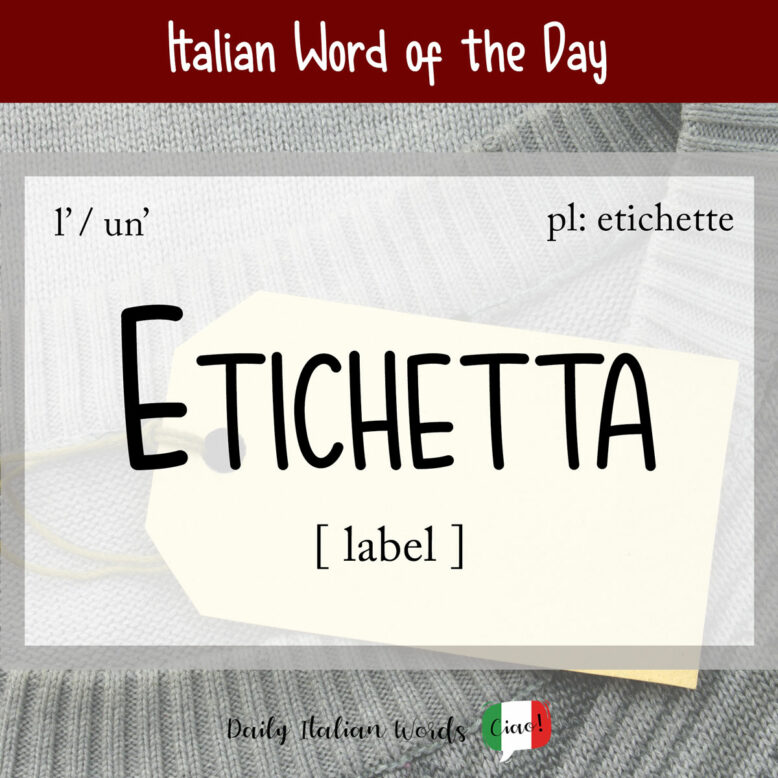A term used to indicate “good manners” in many languages across Europe is etiquette, such as the Italian etichetta, the Spanish etiqueta and the French étiquette. It can be traced back to the old French estiquier / estiquer, meaning “to drive, affix, attach”.
Owing to the addition of the diminutive suffix -etta in Italian, the word took on the additional meaning of “little thing attached” and today is used more frequently to indicate a label or tag applied to various goods to indicate quality, price, content and origin.

Etichetta is a feminine noun beginning with a vowel, so it takes the following definite and indefinite articles:
- l’etichetta = the label / tag
- le etichette = the labels / tags
- un’etichetta = a label / tag
- delle etichette = (some) labels / tags
Questa bottiglia di vino non ha un’etichetta con il prezzo.
This bottle of wine doesn’t have a price tag.
Some common verbs you’ll see used with etichetta include:
- attaccare un’etichetta = to attach a label
- staccare un’etichetta = to remove a label
- mettere un’etichetta a / su qualcosa = to put a label on something

Just as in English, label can be used figuratively to denote a classifying, and often restrictive or inaccurate phrase or name applied to a person or thing. For example, the phrase affibbiare un’etichetta a qualcuno means to label someone.
All’inizio della sua carriera tennistica, i giornalisti avevano affibbiato a Dimitrov l’etichetta di nuovo Federer.
At the beginning of his tennis career, journalists labelled Dimitrov the new Federer.
Finally, etichetta is also another way of saying casa discografica (music label), inspired by the English term.
Heather Broster is a graduate with honours in linguistics from the University of Western Ontario. She is an aspiring polyglot, proficient in English and Italian, as well as Japanese, Welsh, and French to varying degrees of fluency. Originally from Toronto, Heather has resided in various countries, notably Italy for a period of six years. Her primary focus lies in the fields of language acquisition, education, and bilingual instruction.


